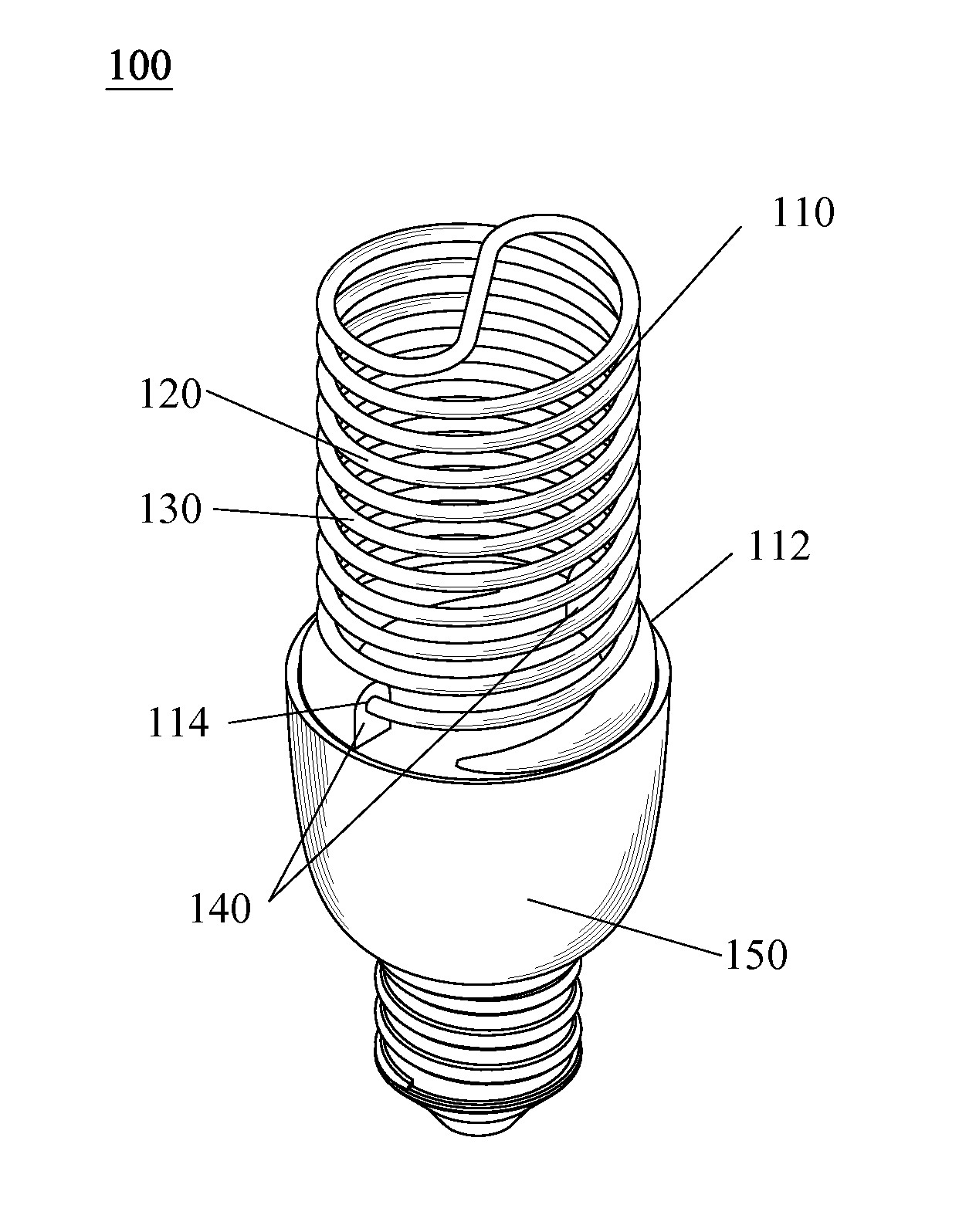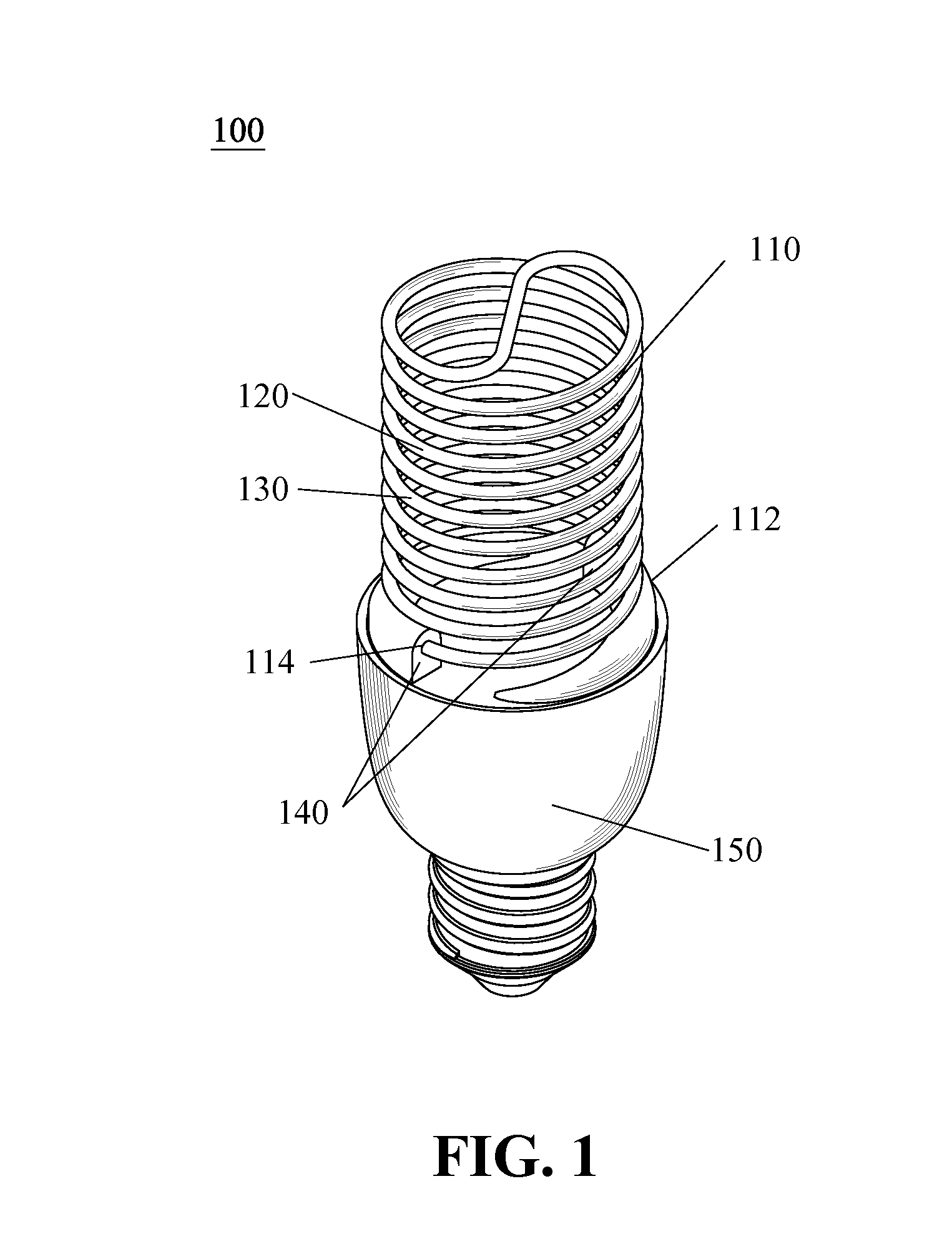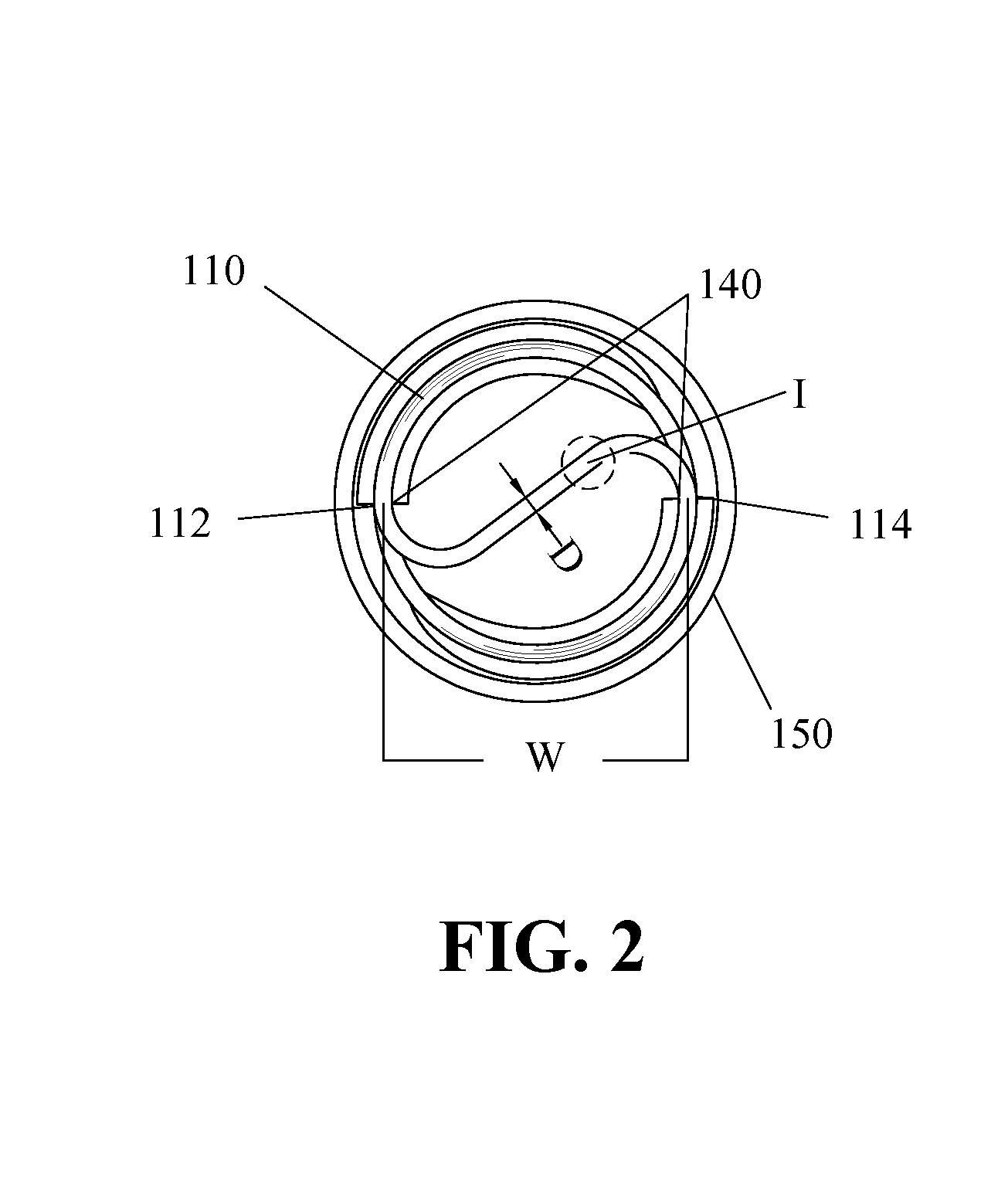Ultraviolet cold cathode florescent lamp
a cold cathode florescent lamp and ultraviolet light technology, applied in the direction of discharge tube/lamp details, discharge tube luminescent compositions, discharge tube/lamp details, etc., can solve the problems of unfavorable skin cancer, uv incandescent lamps that may require frequent maintenance, and current spiral shapes and sizes of light tubes or envelopes adopted therein, so as to achieve effective and efficient cure of a certain type of nail gel
- Summary
- Abstract
- Description
- Claims
- Application Information
AI Technical Summary
Benefits of technology
Problems solved by technology
Method used
Image
Examples
Embodiment Construction
[0021]FIGS. 1 and 2 show an exemplary embodiment of a UV CCFL lamp 100 of the present invention, the UV CCFL lamp 100 is provided for curing a UV curable or polymerizable gel and more particularly, the UV CCFL lamp 100 may be advantageously provided for curing a nail gel in the field or application of nail art with a UV irradiation preferably in a non-UVC spectrum range such as wavelength of UVA (400 nm-315 nm) or UVB (315 nm-280 nm) to ensure a safer and healthier usage. In an explanatory example, the UV CCFL lamp 100 of the present invention may comprise a lamp envelope 110, a discharge medium 120 having ions excited to a plasma state by a high voltage electricity provided at discharge electrodes 140 attached to and configured on two ends 112, 114 of the lamp envelope 110. A UV-excited phosphor 130 may too be disposed within the lamp envelope 110 of the UV CCFL lamp 100 of the present invention and distributed to be in contact with said discharge medium 120 to provide a UV irradia...
PUM
 Login to View More
Login to View More Abstract
Description
Claims
Application Information
 Login to View More
Login to View More - Generate Ideas
- Intellectual Property
- Life Sciences
- Materials
- Tech Scout
- Unparalleled Data Quality
- Higher Quality Content
- 60% Fewer Hallucinations
Browse by: Latest US Patents, China's latest patents, Technical Efficacy Thesaurus, Application Domain, Technology Topic, Popular Technical Reports.
© 2025 PatSnap. All rights reserved.Legal|Privacy policy|Modern Slavery Act Transparency Statement|Sitemap|About US| Contact US: help@patsnap.com



